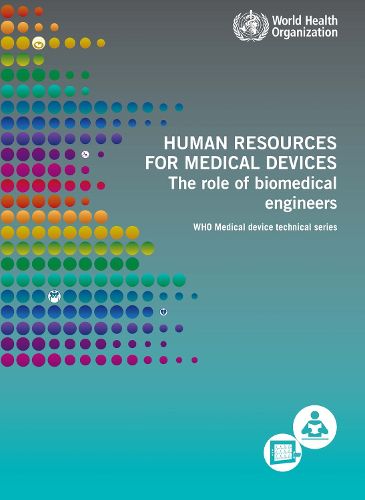Readings Newsletter
Become a Readings Member to make your shopping experience even easier.
Sign in or sign up for free!
You’re not far away from qualifying for FREE standard shipping within Australia
You’ve qualified for FREE standard shipping within Australia
The cart is loading…






This publication addresses the role of the biomedical engineer in the development, regulation, management, training and use of medical devices. The first part of the book looks at the biomedical engineering profession globally as part of the health workforce: global numbers and statistics, and professional classification, general education and training, professional associations and the certification process. The second part addresses all the different roles that the biomedical engineer can have in the life cycle of the technology, from research and development, and innovation, mainly undertaken in academia; the regulation of devices entering the market; the assessment or evaluation in selecting and prioritizing medical devices (usually at national level); to the role they play in the management of devices from selection and procurement, to safe use in health-care facilities. The annexes present comprehensive information on academic programmes, professional societies and relevant WHO and UN documents related to human resources for health, as well as the reclassification proposal for ILO. This publication can be used to encourage the availability, recognition and increased participation of biomedical engineers as part of the health workforce, particularly following the recent adoption of the recommendations of the UN High-Level Commission on Health Employment and Economic Growth, the WHO Global Strategy on Human Resources for Health, and the establishment of national health workforce accounts. The document also supports the aim of reclassification of the role of the biomedical engineer as a specific engineer that supports the development, access and use of medical devices, within the national, regional and global occupation classification system.
$9.00 standard shipping within Australia
FREE standard shipping within Australia for orders over $100.00
Express & International shipping calculated at checkout
This publication addresses the role of the biomedical engineer in the development, regulation, management, training and use of medical devices. The first part of the book looks at the biomedical engineering profession globally as part of the health workforce: global numbers and statistics, and professional classification, general education and training, professional associations and the certification process. The second part addresses all the different roles that the biomedical engineer can have in the life cycle of the technology, from research and development, and innovation, mainly undertaken in academia; the regulation of devices entering the market; the assessment or evaluation in selecting and prioritizing medical devices (usually at national level); to the role they play in the management of devices from selection and procurement, to safe use in health-care facilities. The annexes present comprehensive information on academic programmes, professional societies and relevant WHO and UN documents related to human resources for health, as well as the reclassification proposal for ILO. This publication can be used to encourage the availability, recognition and increased participation of biomedical engineers as part of the health workforce, particularly following the recent adoption of the recommendations of the UN High-Level Commission on Health Employment and Economic Growth, the WHO Global Strategy on Human Resources for Health, and the establishment of national health workforce accounts. The document also supports the aim of reclassification of the role of the biomedical engineer as a specific engineer that supports the development, access and use of medical devices, within the national, regional and global occupation classification system.